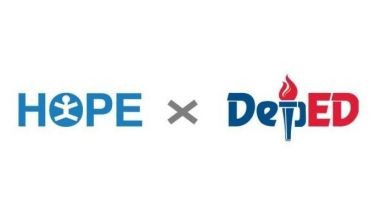Suspended

The ombudsman imposed a six-month preventive suspension on Energy Regulatory Commission (ERC) Chair Monalisa Dimalanta. The suspension appears well-deserved.
The suspension order issued Aug. 20 states that “evidence in record shows that the guilt of respondent Dimalanta is strong and the charges against her involve Grave Misconduct, Grave Abuse of Authority, Gross Neglect of Duty and Conduct Prejudicial to the Best Interest of the Service which may warrant her removal from the service.”
A preventive suspension is meted out if the ombudsman thinks an official’s continued stay in office could prejudice the case filed. It is issued on determination that the evidence against the sitting official is strong.
Given the wording of the ombudsman preventive suspension order, it is probable that Dimalanta’s career in public service could be short-lived. If she is unceremoniously removed, it will be entirely on her own account.
The case against Dimalanta was filed by energy advocacy group NASECORE. The complaint involves prolonged inaction on her part regarding Meralco’s rate reset. A pre-trial conference on the issue was held Sept. 2, 2022. The pre-trial order, which only the chairman of the Commission could issue, was released by Dimalanta on May 3, 2024.
There was a total of 609 days between the pre-trial conference and the release of the pre-trial order. The order was 339 days beyond the maximum number of days prescribed by the Energy Virtual One-Stop Shop (EVOSS) Law for the processing time for the ERC to issue quasi-judicial rulings. This long delay is inexcusable.
Failure to release the order within the legally prescribed time causes harm to the parties involved. More important, the delay penalizes the consuming public.
The strange thing is that Meralco’s petition for a rate reset had the same timetable as two other distribution utilities. The two others are: the Cagayan Electric Power and Light Company (CEPALCO) and the Dagupan Electric Corporation (DECORP). The pre-trial orders for the two other utilities proceeded on schedule through ERC orders issued June 15, 2022 and Sept. 21, 2022. The orders opened the way for the presentation of evidence and public hearings.
According to the ERC’s own rules, a pre-trial order merely states “the matters taken up during the pre-trial conference, the actions taken thereon, amendments allowed to the pleadings and agreements or admissions made by parties.” It is not a magnum opus that might require 609 days to complete.
Other members of the Commission are themselves mystified that Chair Dimalanta delayed the issuance of the order by that much. The now suspended chair must explain why the petitions of two other distribution utilities were efficiently tackled and decided upon while the Meralco petition was shelved and forgotten.
The difference in efficiency in handling cases of the same nature raises serious integrity questions.
Gated
There is another case that approximates the ERC’s actions on the scale of strangeness.
Two years ago, two previously operational gates that allowed efficient movement of air cargo straight to the ramps were ordered closed by way of a court order. The basis for that court order was never clear. The affected gates, used by the defunct cargo handler Miascor, allowed more efficient cargo operations at the airport. They enabled streamlined Customs processes to get the cargo moving.
With only one gate in operation, one cargo player was able to exploit its ramp access to corner the bulk of airport cargo businesses, giving one player near-monopoly. But there was a price for this. A single gate caused inefficient cargo movements and made the Manila airport even more unbearable.
We often see only the passenger side of the inefficient operations of our airport. Few rarely see that the inefficiency in moving passengers is compounded by the inefficiency of moving cargo.
Last December, the MIAA approved the opening of a new gate to improve the flow of cargo and prevent flight delays. Investors expressed interest in building a new bonded warehouse accessible through the new gate. More important, the new gate will enable more companies to compete with the current near-monopoly, serving the 30 airlines using the airport.
That decision seemed routine and probably desirable. However, a group improbably calling itself “Kapisanan ng mga Nagtitiis na Mananakay” filed a case in court asking that the opening of a new gate be stopped. In their suit, the group described the opening of an additional gate “illegal alienation of public property” – even if no sale of public property is involved.
It is not clear how a group with a name indicating they were commuter advocates could be adversely affected by improving cargo movement at the airport. To be sure, they were no ordinary commuters. They posted a bond of P2 million.
The case against the opening of an additional gate was filed last June 3. With such efficiency, the court issued a temporary restraining order against the new gate on June 19. The court elevated this into a writ of preliminary injunction on July 29.
In two days, the Manila airport will be taken over by San Miguel. This gives air commuters much hope that we will finally have better facilities and more efficiency at the now decrepit airport.
But, as the injunction against the new gate indicates, San Miguel will have its hands full dealing with the entrenched interests making money from the airport’s many inefficiencies. The matter of the new cargo gate is merely symptomatic.
- Latest
- Trending






























